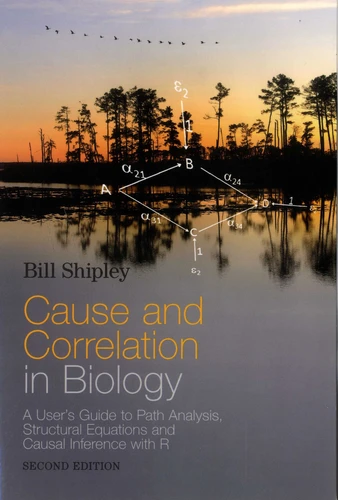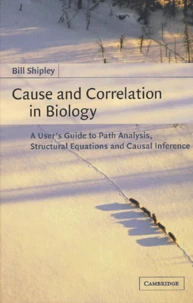Cause and Correlation in Biology. A User's Guide to Path Analysis, Structural Equations and Causal Inference with R
2nd edition
Par : Formats :
- Réservation en ligne avec paiement en magasin :
- Indisponible pour réserver et payer en magasin
- Nombre de pages306
- PrésentationBroché
- FormatGrand Format
- Poids0.65 kg
- Dimensions17,5 cm × 24,8 cm × 1,6 cm
- ISBN978-1-107-44259-7
- EAN9781107442597
- Date de parution01/04/2016
- ÉditeurCambridge University Press
Résumé
Many problems in biology require an understanding of the relationships among variables in a multivariate causal context. Exploring such cause-effect relationships through a series of statistical methods, this book explains how to test causal hypotheses when randomised experiments cannot be performed. This completely revised and updated edition features detailed explanations for carrying out statistical methods using the popular, and freely available, R statistical language.
Sections on d-sep tests, latent constructs that are common in biology, missing values, phylogenetic constraints and multilevel models are also an important feature of this new edition. Written for biologists and using a minimum of statistical jargon, the concept of testing multivariate causal hypotheses using structural equations and path analysis is demystified. Assuming only a basic understanding of statistical analysis, this new edition is a valuable resource for students and practising biologists alike.
Sections on d-sep tests, latent constructs that are common in biology, missing values, phylogenetic constraints and multilevel models are also an important feature of this new edition. Written for biologists and using a minimum of statistical jargon, the concept of testing multivariate causal hypotheses using structural equations and path analysis is demystified. Assuming only a basic understanding of statistical analysis, this new edition is a valuable resource for students and practising biologists alike.
Many problems in biology require an understanding of the relationships among variables in a multivariate causal context. Exploring such cause-effect relationships through a series of statistical methods, this book explains how to test causal hypotheses when randomised experiments cannot be performed. This completely revised and updated edition features detailed explanations for carrying out statistical methods using the popular, and freely available, R statistical language.
Sections on d-sep tests, latent constructs that are common in biology, missing values, phylogenetic constraints and multilevel models are also an important feature of this new edition. Written for biologists and using a minimum of statistical jargon, the concept of testing multivariate causal hypotheses using structural equations and path analysis is demystified. Assuming only a basic understanding of statistical analysis, this new edition is a valuable resource for students and practising biologists alike.
Sections on d-sep tests, latent constructs that are common in biology, missing values, phylogenetic constraints and multilevel models are also an important feature of this new edition. Written for biologists and using a minimum of statistical jargon, the concept of testing multivariate causal hypotheses using structural equations and path analysis is demystified. Assuming only a basic understanding of statistical analysis, this new edition is a valuable resource for students and practising biologists alike.



